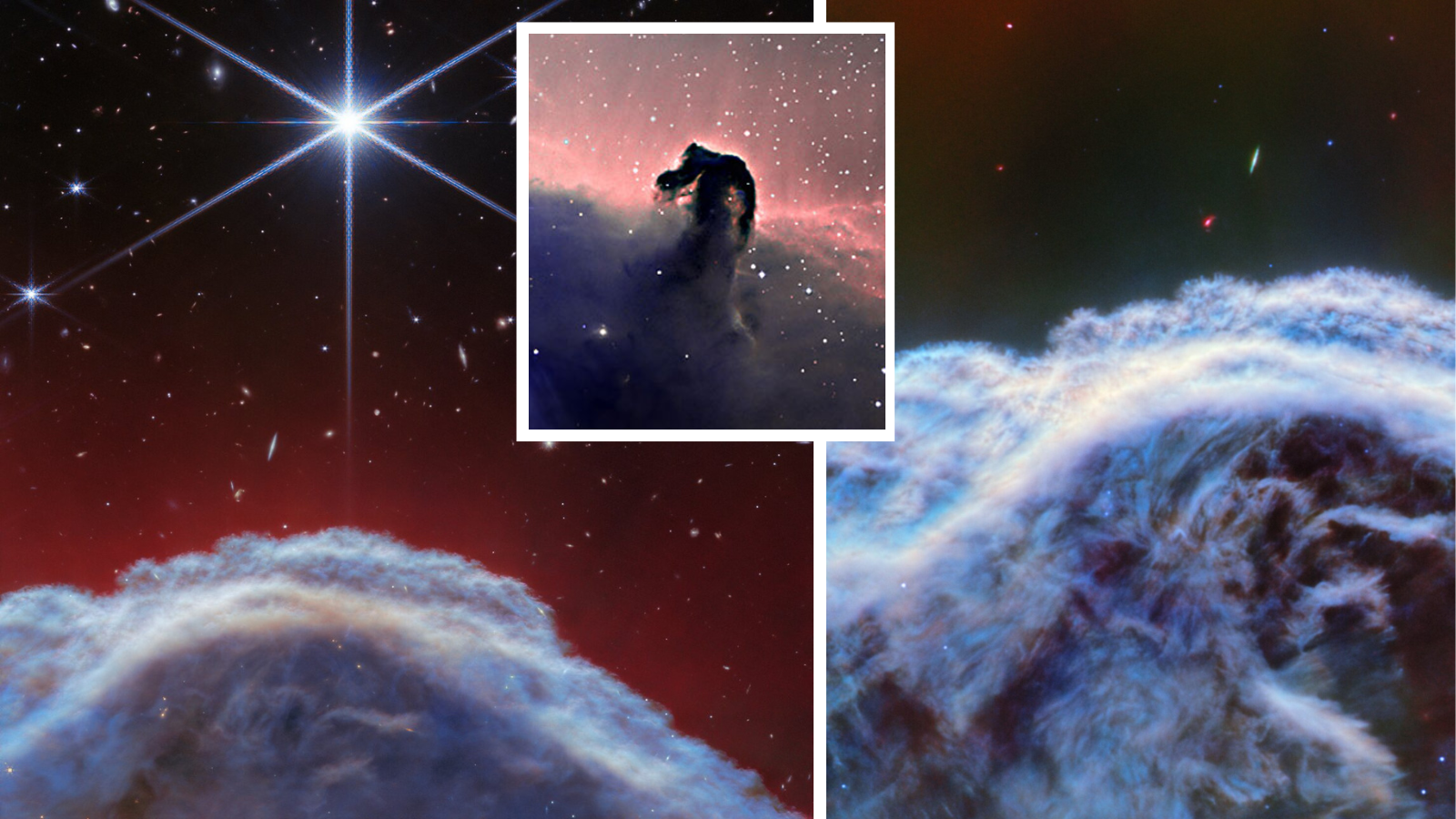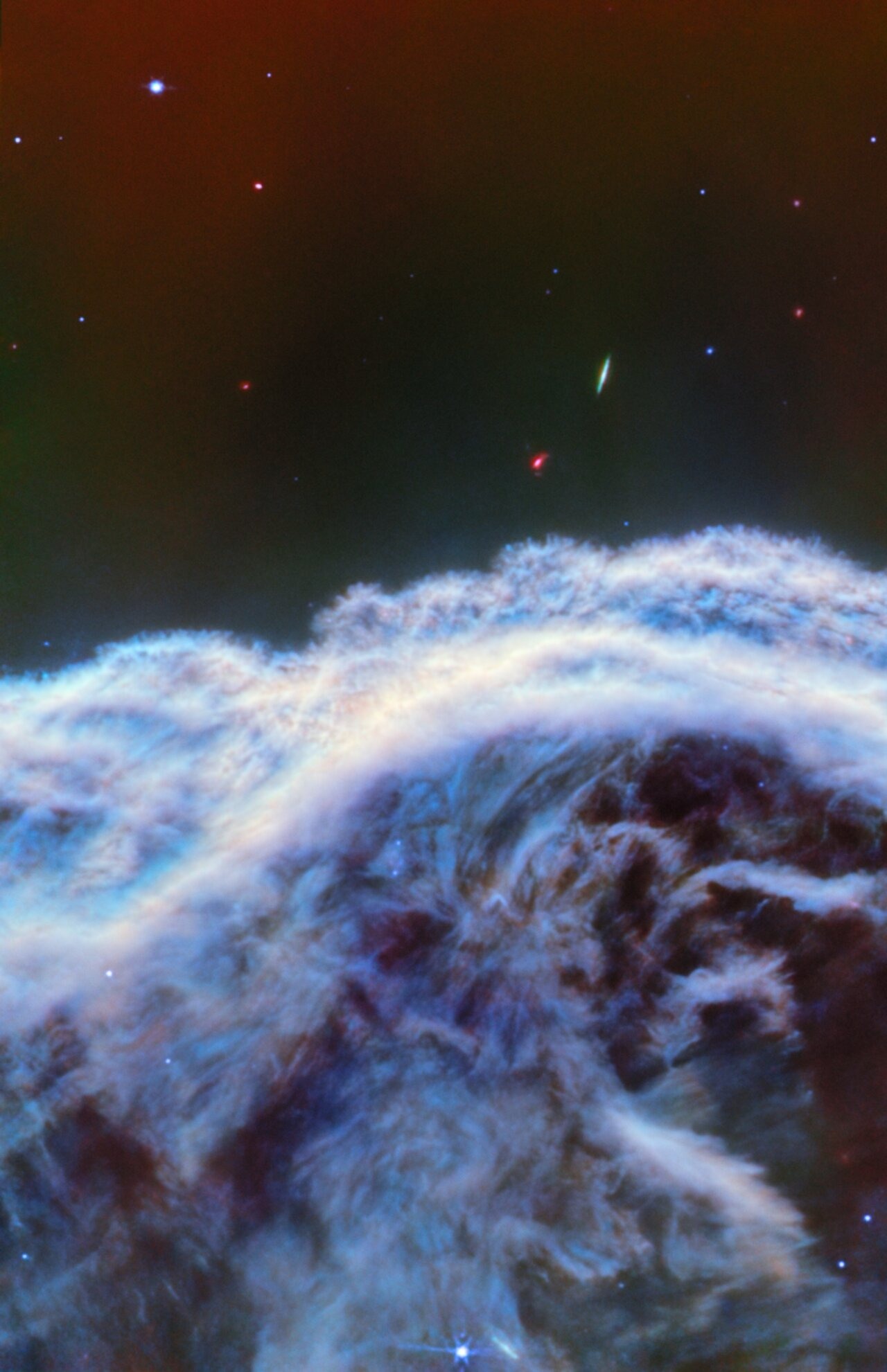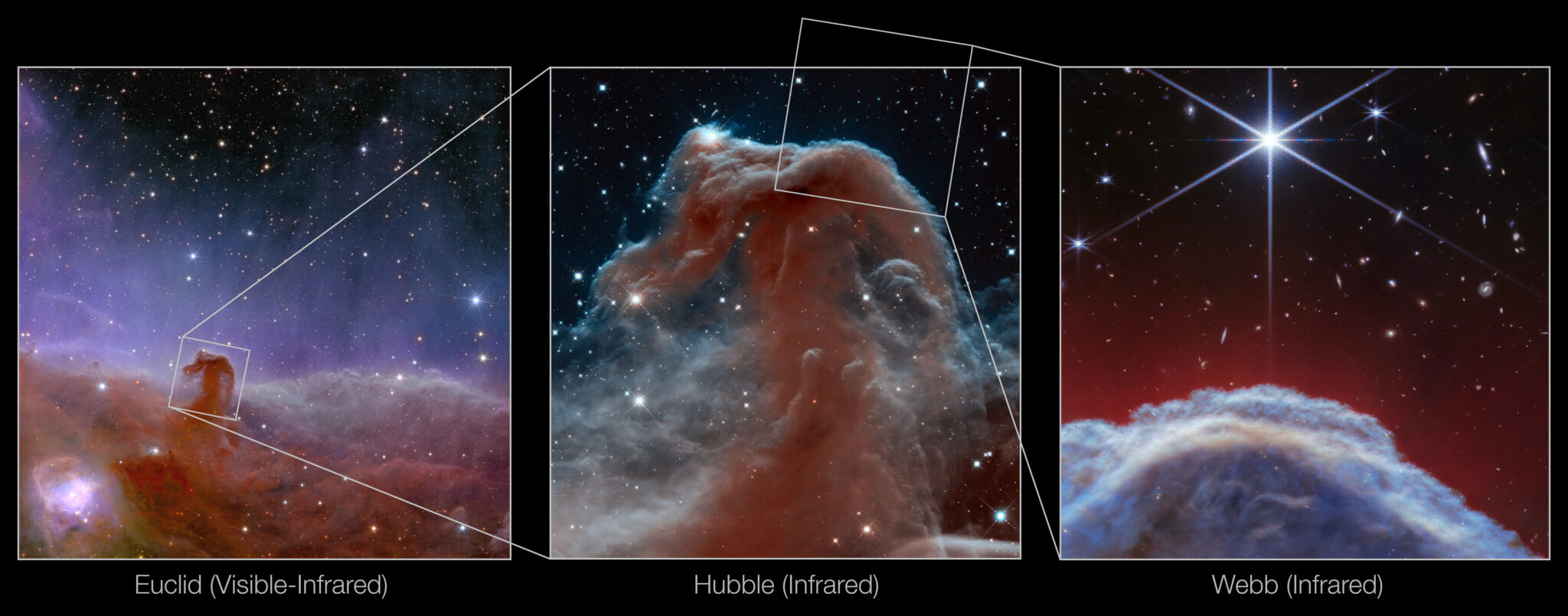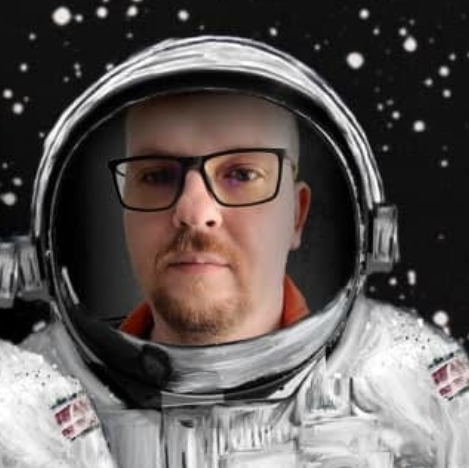A new image from the James Webb Space Telescope shows the clearest infrared image to date of part of the famous Horsehead Nebula. This is the famous cloud of dust and gas in the constellation Orion, which is also known as Barnard 33 and is located at a distance of about 1300 light-years from us.

The Horsehead Nebula is part of a large cloud of molecular gas called the Great Orion Nebula, which is an active star-forming region where many young stars are born. This nebula is illuminated by the bright, hot star Alnitak, located nearby. The image shows the uppermost part of the nebula — capturing the area that forms the “horse’s mane”.

This image was taken using the NIRCam instrument on board James Webb, which operates in the near infrared range, which is beyond the range visible to the human eye. It shows many background galaxies and bright stars, as well as a cloud of matter below.
Another image of the same area was taken using the James Webb instrument MIRI, which operates in the mid-infrared range and illuminates more structures in the nebula, but fewer background objects. By combining images from both instruments, scientists can create a more complete picture of the region.

The Horsehead Nebula is of particular interest to researchers, as it is a pocket of neutral material in the midst of many sources of ultraviolet light. The gases in this region, called the photodissociation region, are heated by radiation, but for the most part are not ionized, unlike the large amount of gas around bright young stars, which quickly become ionized due to the radiation emitted by the stars. It is believed that BH are formed in areas where the gas has sufficient density so that ultraviolet radiation can penetrate and heat the gas, but not ionize it.
These regions are usually located on the borders of large clouds of molecular gas. Although astronomers used to consider these regions homogeneous, they now know that they can have a complex structure. Some of them can be seen in these pictures.

Researchers working with James Webb will continue to use its spectroscopic instruments to learn more about the matter that makes up the nebula.
Earlier, we reported on how James Webb noticed the merger of the first galaxies of the universe.
According to space.com
Follow us on Twitter to get the most interesting space news in time
https://twitter.com/ust_magazine


